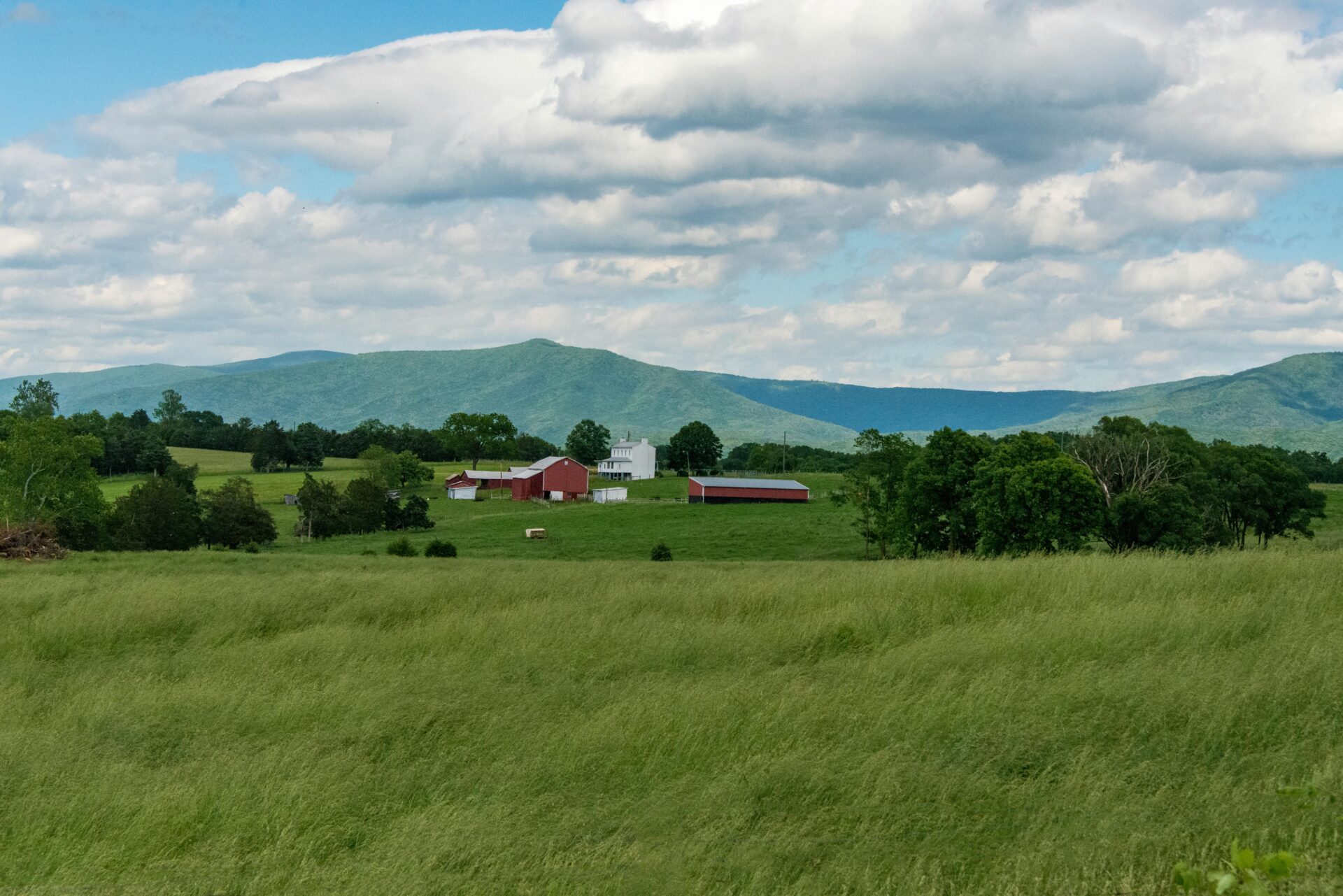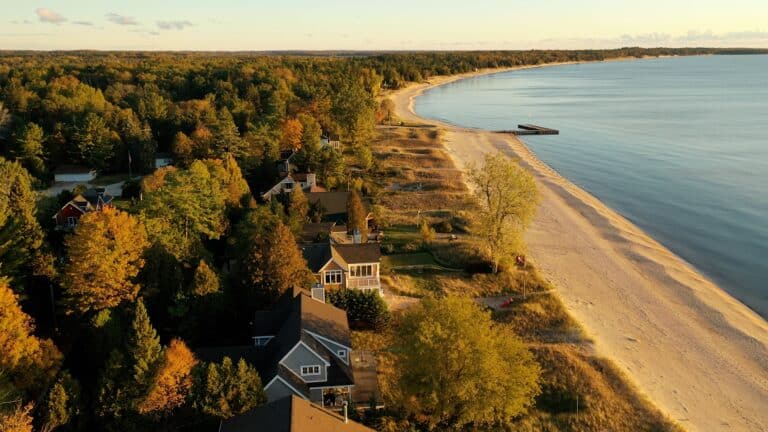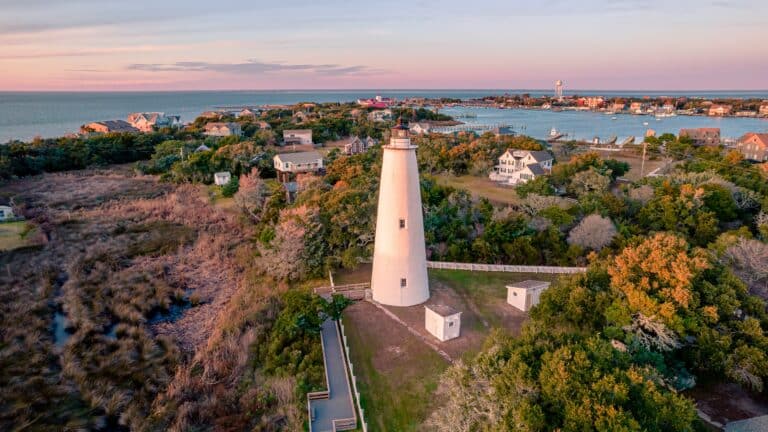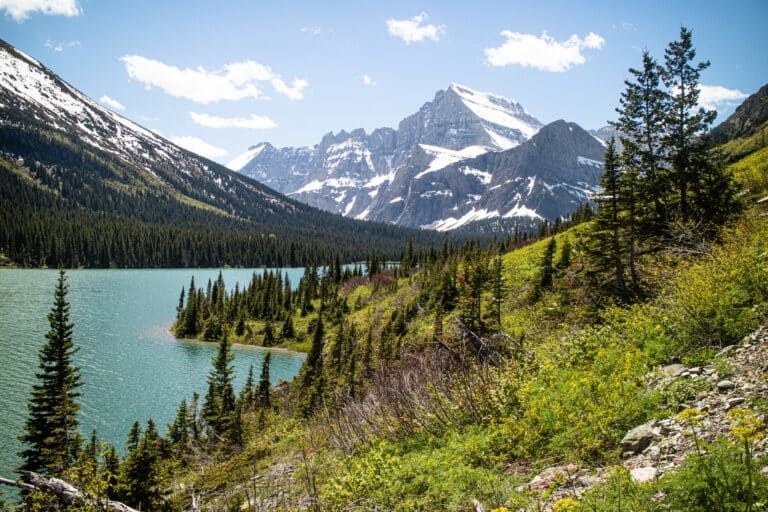Buying land in Wisconsin offers an invitation to wide open spaces, fresh water, rich soil, and a lifestyle rooted in nature.
Whether you’re dreaming of a secluded cabin in the Northwoods, investing in productive farmland, or searching for a lakefront retreat, Wisconsin has a unique mix of landscapes and price points that make it a standout destination for land buyers.
In this guide, you’ll learn everything you need to know about buying land in Wisconsin. From understanding the state’s regional differences to navigating zoning rules and land management practices, we’ll help you make a confident purchase, backed by local insight for your long-term vision.
What Draws Buyers to Wisconsin Land
There’s a reason Wisconsin is one of the best places to buy land in the Midwest. Interest in land for sale in Wisconsin is driven by three main advantages:
- Natural variety
- Affordability
- Access
You’ll find nearly every kind of parcel here, from rolling farmland and dense pine forests to remote hunting plots and buildable lots near bustling cities. The natural diversity is unmatched, and compared to neighboring states like Minnesota and Illinois, land in Wisconsin often comes at a lower cost per acre.,
Popular land types include:
- Lakefront parcels with access to boating, fishing, and recreation
- Timbered acreage for hunting, off-grid cabins, or forestry developments
- Productive farmland with rich soil and agricultural potential
- Rural or recreational lots ideal for weekend getaways, mobile cabinets, or hobby farms
Whether you’re after serenity or investment potential, Wisconsin’s land market is surprisingly versatile.
Choose a Region That Aligns With Your Vision
When you’re thinking about how to buy land in Wisconsin, the most important first step is choosing the right region for your goals. Wisconsin is geologically and culturally diverse, and each area offers a different experience.
Your land’s use (whether for farming, recreation, or building) should guide where to focus your search.
Northwoods: Seclusion, Forests, and Lakes
The Northwoods region, which spans the northern third of the state, is a haven for outdoor lovers. With dense forests, thousands of glacial lakes, and abundant wildlife, it’s perfect for:
- Remote cabin sites
- Lakefront builds
If solitude and nature are your priorities, the Northwoods may be the best place to buy land in Wisconsin.
Driftless Area: Scenic Beauty and Off-Grid Living
Southwestern Wisconsin’s Driftless Area wasn’t flattened by glaciers like much of the midwest, which makes it especially scenic. Here you’ll find:
- Rolling hills and dramatic bluffs
- Off-grid and alternative builds
- Organic farms and homesteads
- Trout streams and conservation areas
It’s ideal for buyers looking to disconnect or pursue sustainable living.
Central Wisconsin: Rich Soil and Rural Communities
If your dream involves planting crops or raising animals, central Wisconsin’s farmland is hard to beat. This region features:
- Productive agricultural plots
- Affordable acreages
- Friendly rural communities
- Easy access to supply and distribution routes
Agricultural farmland in Wisconsin may be the perfect fit for aspiring farmers or those seeking long-term investment properties.
Southeast: Proximity and Convenience
If you want to enjoy your land without being too far off the grid, the southeastern region (especially near Madison, Milwaukee, or Lake Geneva) offers:
- Buildable lots with development potential
- Recreational or weekend land within driving distance of cities
- Small acreages with access to public utilities
If you’re planning to build a primary or secondary residence, this area is a must-visit.
Understand the Land Itself: Terrain, Soil, and Seasonal Factors
Land is never one-size fit all, and in Wisconsin, terrain and soil types can vary significantly from one parcel to the next. It’s essential to understand what to look for when buying land in Wisconsin, especially if you plan to build, farm, or maintain trails.
Terrain and Drainage
Low-lying areas may be prone to seasonal flooding, especially during the spring thaw. Meanwhile, rolling or hilly land might offer better views, but require more work for access or grading.
Check for wetland designations, since these can restrict development and require environmental permitting.
Soil Types
In central Wisconsin, you’ll find sandy loam ideal for root crops and grazing. Meanwhile, many western counties have rocky soil that’s better suited for grazing or recreation.
You may want to consider soil testing if you plan to grow crops or build a septic system after buying land.
Seasonal Considerations
Wisconsin experiences snowmelt, spring rains, and freeze-thaw cycles that affect land access and use. Roads to rural parcels may become impassable in mud season, and unplowed access can be a challenge during winter.
Since it isn’t always possible to visit a property in different seasons, consider asking current owners, neighbors, or a local land pro about these seasonal need-to-knows and year-round access.
Know the Regulations: From Zoning to Shoreland Rules
Land use laws in Wisconsin can vary dramatically by county, and sometimes by town. If you’re wondering what to look for when buying land in Wisconsin, local regulations should be high on your list.
Understanding these rules early on can save you from costly surprises down the road.
Zoning and Permits
Each county has its own zoning ordinances that dictate how individuals can use land and what they can build on it. Before making an offer, ensure you understand how your ideal plot is classified and what restrictions may apply.
Specifically, here are some questions to ask when buying land in Wisconsin:
- Is the parcel zoned residential, agricultural, or commercial?
- Are there minimum lot sizes or building setbacks?
- Can you park a camper or mobile home on it?
Taking time to verify zoning can help you avoid buying land that won’t allow the type of use you have in mind, whether that’s building a cabin, starting a farm, or running a business.
Shoreland Zoning
If your parcel is near a lake, river, or wetland, it may fall under Wisconsin’s shoreland zoning rules. These regulations are designed to protect natural water sources, but they can affect where and how you build.
Typical shoreland zoning rules include:
- How close you can build to the water
- The types of vegetation you can remove
- Impervious surface limits (roofs, patios, etc.)
While these rules preserve water quality and scenic beauty, they may also limit your building footprint or landscaping plans. Always consult the county’s land and water conservation department before finalizing a purchase near water.
Easements and Access
Access is another key factor that can affect the usability of your land. Some parcels may appear ideal but lack legal or practical access, which can impact financing, construction, and future resale.
With that in mind, make sure to ask the following questions before you make a purchase:
- Does the parcel have legal access via road or easement?
- Are there any shared driveways or utility easements?
- Are there restrictions tied to conservation easements or land trusts?
Clarifying access details now will ensure you don’t end up with a landlocked property (or one with unexpected limitations).
What Responsible Land Ownership Looks Like in Wisconsin
Buying land is about stewardship. Responsible land ownership in Wisconsin often means caring for your parcel in a way that supports its long-term value, usability, and ecological health.
Forest and Wildlife Management
If your land is wooded, consider a basic management plan to:
- Promote healthy tree growth
- Minimize fire risk
- Support wildlife habitat
- Improve recreational access
You can even work with a forester to create a selective logging plan that balances income with sustainability.
Managed Forest Law (MFL)
Wisconsin’s Managed Forest Law (MFL) is a voluntary program that offers property tax breaks in exchange for practicing sustainable forest management. Participating properties may:
- Be open or closed to public access
- Have management goals tailored to your interests
- Require periodic updates or inspections
This may be the right fit for landowners looking to offset their taxes while improving long-term value.
Maintenance and Improvements
Rural land often needs more upkeep than a typical suburban lot. Taking care of the land you own is crucial, especially in Wisconsin, where the weather, vegetation, and terrain can vary widely.
Consistent upkeep is essential to preserving both the beauty and usability of your property, with tasks including:
- Road or trail maintenance
- Invasive species control
- Erosion mitigation
- Annual clearing, planting, or mowing
Fortunately, a little planning can go a long way in preserving your investment after buying land in Wisconsin.
Work With People Who Know the Land and the Laws
If you’re serious about buying land in Wisconsin, don’t go it alone. Land purchases involve different financing, due diligence, and legal considerations than purchasing a house, so you may want to consider hiring:
- A Wisconsin-based land agent who understands zoning, utilities, and local markets
- A land surveyor to map property lines and identify easements
- A real estate attorney for contract review and legal clarity
These professionals can help you avoid surprises and protect your investment for the long haul.
Start Your Search in Wisconsin with Land.com
Whether you’re just browsing or ready to schedule a site visit, Land.com makes it easy to explore listings across the entire state. You’ll find detailed filters for parcel size, price, region, and land use type, all tailored to buyers like you. Plus, our network of specialized land agents understands the nuances of buying land in Wisconsin, and they’re committed to guiding you through the entire process so that you can feel confident in your land purchase decision.
Ready to explore the best places to buy land in Wisconsin? Visit Land.com today to start your search.
Sources:
Circle M Landscape. What Is Sandy Loam? https://circlemlandscape.com/2022/04/04/what-is-sandy-loam-soil-key-things-to-know/
DTN Progressive Farmer. Cropland Values Up 4.3% in 2025. https://www.dtnpf.com/agriculture/web/ag/news/business-inputs/article/2025/08/01/cropland-values-continue-rise-5-830#:~:text=The%20overall%20farm%20real%2Destate,.nass.usda.gov.
FarmDoc Daily. Steady Ground: Illinois Farm Real Estate Values Show Continued Strength in 2024. https://farmdocdaily.illinois.edu/2024/08/steady-ground-illinois-farm-real-estate-values-show-continued-strength-in-2024.html#:~:text=The%20average%20farm%20real%20estate,third%20highest%20increase%20since%202015.
The Nature Conservancy. Great Lakes Northwoods. https://www.nature.org/en-us/about-us/where-we-work/priority-landscapes/great-lakes/stories-in-the-great-lakes/great-lakes-northwoods/
Wisconsin Department of Natural Resources. Managed Forest Law. https://dnr.wisconsin.gov/topic/forestlandowners/mfl#:~:text=The%20Managed%20Forest%20Law%20(MFL,landowner%20pays%20reduced%20property%20taxes.
Wisconsin Department of Natural Resources. Shoreland Programs. https://dnr.wisconsin.gov/topic/ShorelandZoning/Programs/programs.html
Wisconsin Historical Society. Driftless Area. https://www.wisconsinhistory.org/Records/Article/CS1626#:~:text=The%20Driftless%20Area%20refers%20to%20the%20hilly,left%20by%20glaciers%20so%20it%20is%20%22driftless.%22



